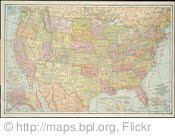According to Linde Beebe, Senior Director of PsycInfo, in the latest issue of PsycInfo News (Aug. 2011):
"To clarify what appears to be confusing and even misleading information in the marketplace, we wish to make it absolutely clear what APA content is available through discovery services.
APA has
not provided any metadata from PsycINFO
® to any service, nor does the organization have any plans to do so at this time. With more than 3.1 million records from as early as 1597, PsycINFO is the only source for literature that covers the breadth and depth of psychology and related disciplines...
Comparing search results for common psychological constructs in PsycINFO with those in discovery services very quickly demonstrates the dramatic difference in what the searches yield. Any claims to the contrary in discovery service sales and marketing communications should be viewed with skepticism.
Researchers and students with no access to PsycINFO will miss a very large percentage of content in almost any area. And they will not have the advantages of the precision PsycINFO offers them in refining their search. The only way to get the content in PsycINFO is through a site license or purchase of a daily pass.
Metadata only for APA's full-text databases PsycARTICLES
®... currently are included in the indexes of four major discovery services:
- EBSCO Discovery Service from EBSCO
- Primo from Ex Libris
- Summon from Serials Solutions [the one being used at UNLV Libraries]
- WorldCat Local from OCLC
APA has collaborated with these services to enable our customers to find full text more easily. Our agreements with the services stipulate that users will link from the services to our full text only if they are authorized users of an institution that has a current APA site license agreement...
We have collaborated with discovery services to provide an additional service to our customers for full text. In no way, however, should our collaboration be viewed as a potential replacement for the APA databases themselves."
So, just a reminder that, although Summon will find lots of material, it doesn't search everything!











